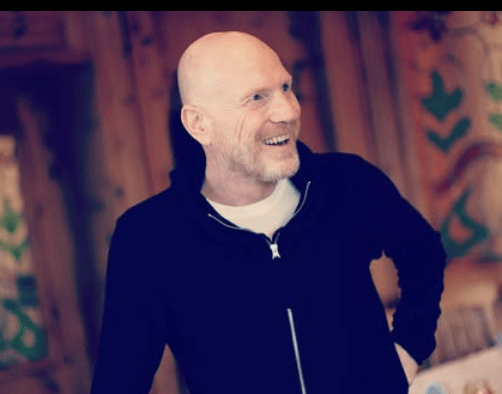Despite being only 181 cm tall, Matthias Sammer has had a rather significant impact on European football. His career serves as an example of how cerebral acuity, strategic presence, and leadership can greatly outweigh physical attributes. For defenders, this height usually represents the midway ground, but Sammer’s field vision and sheer anticipation made the position incredibly useful.

Sammer was a pivotal figure in the evolution of the libero position during the last few decades. His transition from midfield to a sweeping defense position turned out to be one of the most significant tactical changes in football. It was a redefinition rather than merely a shift in role. Instead than being a conventional stopper, he served as a tactical metronome by continuously stopping play and starting attacks. He moved with great efficiency, frequently outpacing assailants in thought before they could act.
Matthias Sammer – Personal and Professional Snapshot
| Attribute | Details |
|---|---|
| Full Name | Matthias Sammer |
| Date of Birth | 5 September 1967 |
| Place of Birth | Dresden, East Germany |
| Height | 181 cm |
| Playing Positions | Libero, Defensive Midfielder |
| Youth Career | SG Dynamo Dresden (1976–1985) |
| Senior Clubs | Dynamo Dresden, VfB Stuttgart, Inter Milan, Borussia Dortmund |
| Notable Awards | Ballon d’Or (1996), UEFA Euro 1996 Champion, Champions League Winner |
| Coaching & Directing | Coach at Dortmund, Director at DFB and FC Bayern Munich |
| Current Roles | Expert at Amazon Prime Video, Advisor at Borussia Dortmund, Gokixx |
| Reference |
Sammer was born in Dresden, East Germany, and his ascent was entwined with a country undergoing change. He started his youth career with SG Dynamo Dresden in 1976 and showed a spirit that felt remarkably adaptable as he made his way through the strict rules of East German football. His transfer to VfB Stuttgart and later to Inter Milan in Italy exposed him to more diverse tactical settings, each of which influenced his distinct hybrid style. But it was at Borussia Dortmund that his genius was most apparent. There, the 181 cm frame served as the foundation of a team that won multiple Bundesliga crowns and the UEFA Champions League.
His performance at the UEFA European Championship in 1996 astounded both viewers and critics. Sammer became the focal point of Germany’s winning team despite playing with an injury and controlling the field. He received the Ballon d’Or later that year, demonstrating that his intelligence for the game not only outshone his height but also brilliantly eclipsed it.
Digital sports material exploded during the epidemic, giving Sammer’s legacy a new voice. His observations as a Champions League expert observer on Amazon Prime Video have been remarkably lucid. He analyzes games as a systems thinker as well as a former player, teaching players and prospective coaches valuable lessons in real time. His astonishingly seamless transfer from the field to the screen has solidified his status as a modern gaming educator.
Sammer has contributed to the development of systems that value smart play over pure athleticism by working with his old team, Borussia Dortmund, where he currently serves as an external advisor. It’s very creative of him to be involved with Gokixx, a digital platform that empowers young football players around Germany. It ensures that future generations gain from his experience without ever having to pitch alongside him by extending his legacy into the digital realm.
Sammer’s impact on football development extends beyond winning championships and prizes. The groundwork for Germany’s victory in the 2014 FIFA World Cup was established during his time serving as sporting director of the German Football Association from 2006 to 2012. His plan placed a strong emphasis on long-term sustainability and young development, two ideas that were further enhanced while he was still at FC Bayern Munich.
It is impossible to ignore how dependable Sammer has been in forming the identity of German football since reunification. He contributed to the development of a football philosophy that emphasized innovation, teamwork, and technical prowess as the country transitioned from a divided to a united powerhouse. His height of 181 cm came to represent a composed and deliberate presence that was constantly balanced between distribution and defense.
Sammer is seen by players such as Joshua Kimmich, Xabi Alonso, and Philipp Lahm as an example of a forward-thinking football player. These players show how football intelligence can reshape positional expectations, although none of them are very tall. The versatile, dual-purpose duties of today’s central midfielders and defenders are a direct descendant of Sammer’s reimagining of the libero.
Sammer has maintained a high level of visibility and respect through strategic alliances and media engagements. His analysis informs rather than flatters. His criticisms are consistently well-founded rather than bombastic. He speaks to provoke thought rather than to create drama. His quiet yet incisive demeanor reflects his previous style of play, which was to be the sharpest player on the field rather than the loudest.
Voices like Sammer’s have grown increasingly important since the advent of channels like as Amazon’s Champions League broadcast. His critique is instructive as well as nostalgic, particularly for those who wish to see strategies that go beyond platitudes. He demonstrates how earlier ideologies can still be useful in the present by bridging the gap between his own and the present.
Sammer makes sure his influence transcends screens and into coaching at the grassroots level by fusing his knowledge of football with technology and mentoring programs. Having access to someone like him, even virtually, is really helpful for athletes in their early stages. His strategy demythologizes the game and makes it appear that winning is achievable by thinking the fastest rather than by being the biggest.
